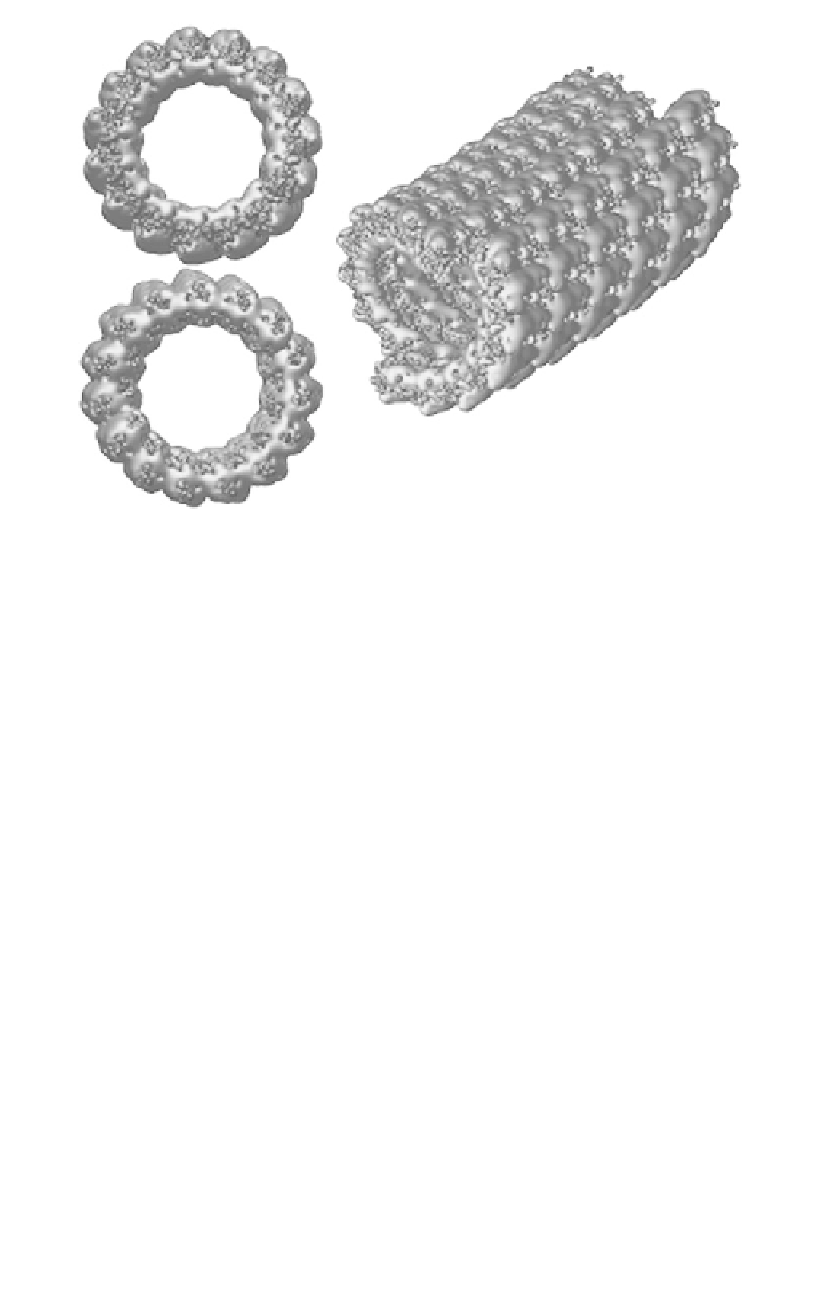Biology Reference
In-Depth Information
Figure 3.10
Electrostatic isopotential surfaces of a microtubule calculated by
Baker et al. [65]. To view this figure in color, see the companion web site for
Systems Biology
,
http://www.oup.com/us/sysbio.
field around a microtubule (figure 3.10). Microtubules are hollow
cylindrical structures in the cells of eukaryotes that are part of their
rigid cytoskeleton. These structures provide a number of different
roles in cells besides providing structure; they are involved in material
transport within the cell as well as cell motility and division. They are
approximately 25 nm in diameter and, depending on their particular
function, can have lengths from nanometers to millimeters. The system
studied by Baker et al. consisted of over 600,000 atoms and the study
employed a finite element approach for solving the Poisson-Boltzmann
electrostatic equations for the field.
HIGH
-
PRECISION SYSTEMATIC CHARACTERIZATION AND COMPARISON
OF FORCE FIELDS
Work is continuing on the development of improved force fields for
modeling water. Most biological processes take place in an aqueous
environment and, in fact, the structure of most biological molecules
is determined to a large extent by the nature of their interaction
with water. Therefore, the quality of the force field for modeling
water-water interactions is of critical importance to the study of most
biological molecular systems. Recently, Horn et al. [18] developed

Search WWH ::

Custom Search